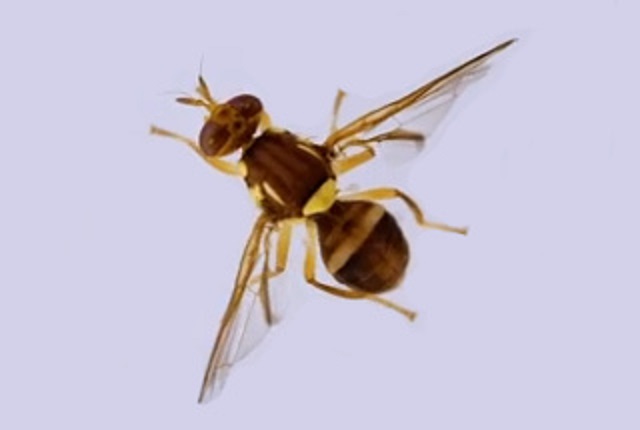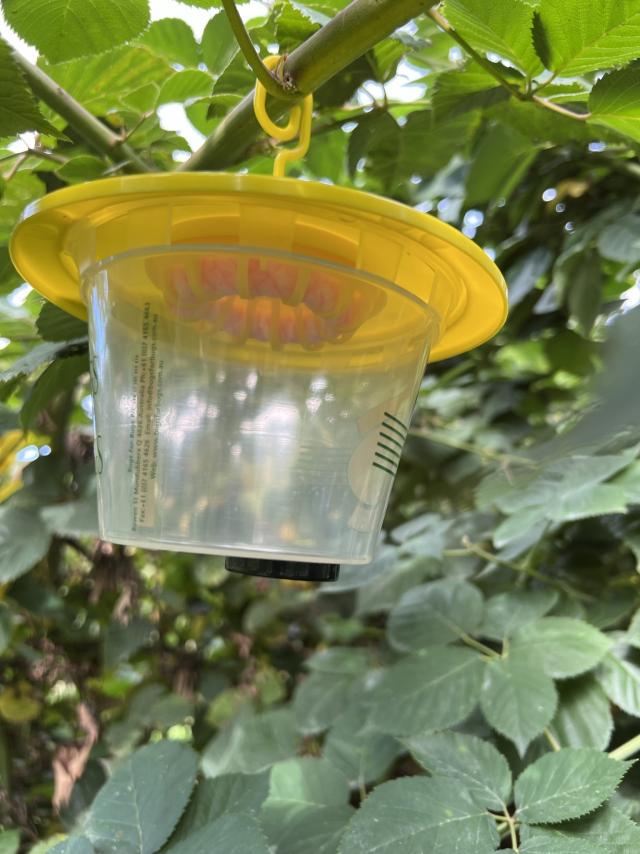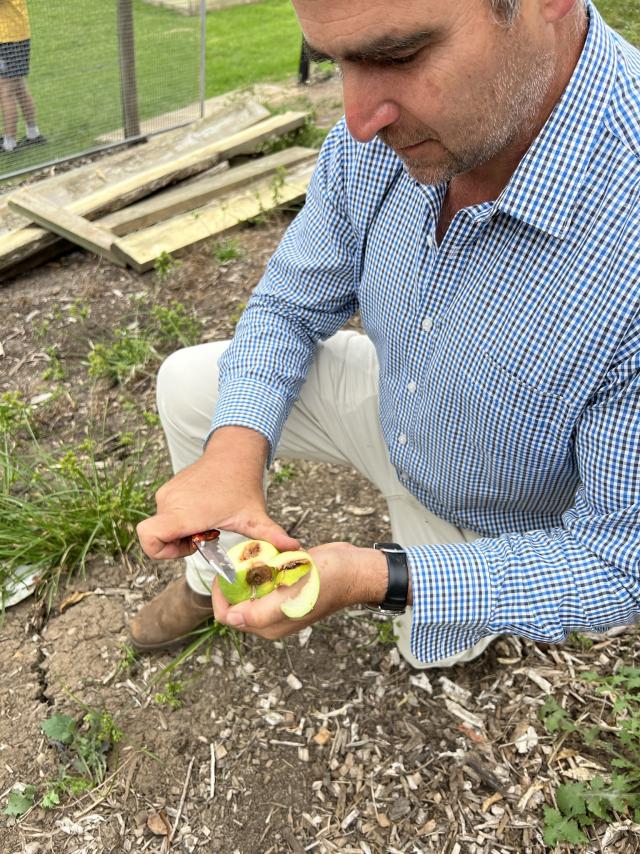By Callum Ludwig
Yarra Ranges farmers and Agribusiness Yarra Valley are working hard to detect and eradicate the Queensland Fruit Fly (QFF).
Over the Summer the pest was detected in traps in Silvan, Yering, Coldstream, and Yellingbo, and as larvae in home garden peaches and tomatoes in Yarra Glen. With recent detections in traps in Silvan and Healesville in April, the efforts of QFF awareness and promoting action won’t be stopping.
QFF Regional Coordinator in the Yarra Valley Bronwyn Koll said a couple of years ago the Yarra Valley was fruit fly free, and current efforts are aiming to keep the pest away as much as possible.
“We use a surveillance grid of traps and fruit checks, and we had evidence to prove that there were no fruit flies in the Valley,” she said.
“We’re working to ensure a higher rate of certainty that properties are fruit fly free. It’s a three to four-year task for growers, but it is achievable.”
The QFF targets hundreds of different fruit species, including a range of berries, apples and grapes that are prevalent throughout the Yarra Ranges. Currently in Autumn, the most at risk fruits include any fruit that has been left unharvested, like apples, feijoas, quinces, and also fruit that is ripening, like citrus fruits like lemons and oranges.
Ms Koll said Agribusiness Yarra Valley and farmers are taking preventive action to eliminate the fly, and she encourages home-growers to do the same.
“If you’ve heard of fruit fly risk within your 2km warning radius, start putting out fruit fly bait. Growers should report if they see anything suspicious, and particularly those with fruit or veggies in their backyards who may not look otherwise,” she said.
The Yarra Ranges Council send out letters to affected areas after the first case of QFF detection, or growers can follow the Keep Yarra Valley Fruit Fly Free Facebook page for regular updates.
“We have fruit fly bait, laced with an organic insecticide, which attracts only fruit flies to it because of the decomposing proteins, for a very targeted and minimally invasive technique,” Ms Koll said.
Growers who have heard of fruit fly risk within their location should start putting out fruit fly bait weekly and repeat it after rain. They should also have a focus on harvesting fruit before it falls, and keeping the production area clean to reduce the risk of the QFF.
Growers can look out for a pin-sized sting on the fruit’s surface from the laying of eggs and 5mm to 10mm long, creamy-white maggots/larva that often eat towards the centre of the fruit and cause it to rot. Whilst hard to spot, they may also notice white, 1mm long, banana-shaped eggs inside fruits and vegetables or oval, brown, hard pupae that have burrowed into the ground to develop into flies. Adult flies themselves are 7mm long, reddish-brown in colour, with distinct yellow markings. They often hide in the leaves of trees and are mostly only known about when specific fruit fly traps are operating and checked regularly.
Infested fruit needs to be destroyed by boiling or freezing, and then disposed of in a sealed bag in the regular rubbish.
Free QFF information sessions are avaialable and to roganise one, growers can contact Ms Koll via email qff@agribusiness-yarravalley.com or the phone 0490381999, and a workshop can be arranged at a time and location that suits.











